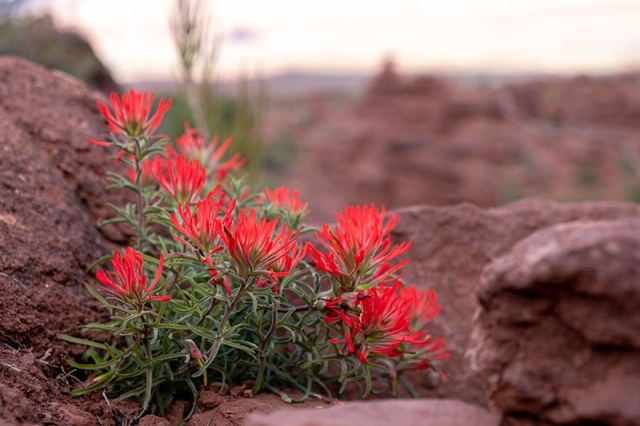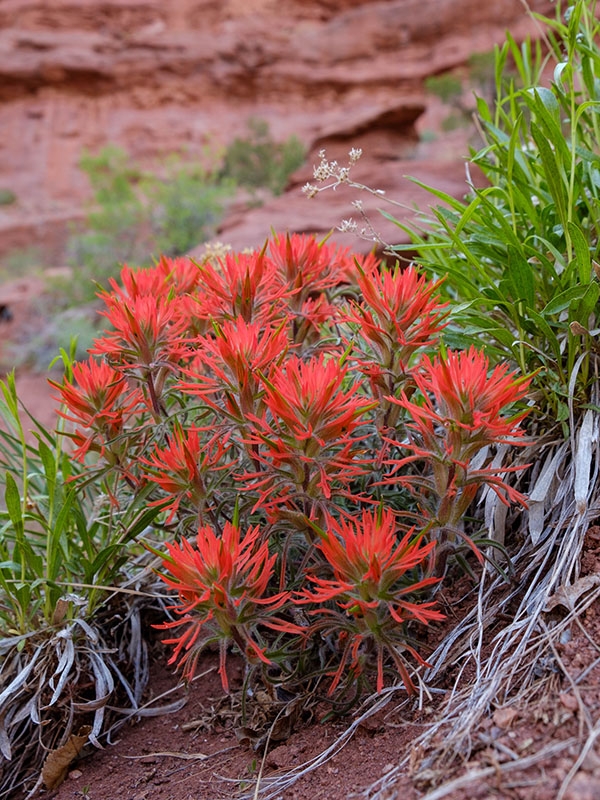Paintbrush: Colorado’s Vampire Plants
The colorful displays of Paintbrush that enliven natural landscapes from our grassy steppe to the alpine tundra make them one of Colorado’s most recognizable wildflowers. The genus Castilleja, to which paintbrush belongs, contains over 200 unique species, most of them residing in western North America. Despite their cheerful appearance, these mountain denizens are hiding a dark secret: they are the vampires of the plant world.
Paintbrush are hemi-parasitic organisms, meaning they can photosynthesize and produce some of their own energy, but they rely on host plants to supply most of their nutrition. This is a characteristic shared by members of their plant family, Orobanchaceae (other members of this family are holo-parasitic, meaning they rely entirely on other plants for their nutrition). To access these resources, Castilleja possess specialized root-like structures, called haustoria, which pierce the roots of unsuspecting host plants to siphon off carbohydrates and other nutrients.

The relationship between Castilleja and their host plants has been studied extensively and researchers have determined that it is not a one-dimensional exchange. Studies show that host plants can influence the characteristics of the paintbrush plant that is parasitizing them, affecting its growth or how attractive a paintbrush plant is to pollinators, which ultimately influences its seed production. For example, when parasitizing nitrogen-fixing legumes that add fertility to the soil (e.g. lupines), paintbrush have been shown to produce more seeds and attract more pollinators compared to those parasitizing grasses. Research has also revealed that the tissue chemistry, or phytochemistry, of Castilleja can be host specific. Paintbrush are even able to assimilate chemical compounds used for defense by host plants into their own tissues, making them less attractive to herbivores. So, the “blood” of their hosts can literally run through their veins.
Do Castilleja offer anything in return to host plants for their plundering? The answer is more complicated than you might expect. If we think of host plants as individuals, then the answer is probably no: Castilleja parasitism clearly reduces growth, reproductive success, and can cause nutritional deficiencies for their host plants. However, the entire plant community may benefit since hemiparasites like Castilleja may actually increase overall species diversity by reducing any competitive advantage of their parasitized hosts, allowing weaker plant competitors to coexist where they would not have been able to otherwise.

Other research suggests that in nutrient-poor ecosystems, paintbrush can support higher rates of nutrient cycling due to their high-quality plant litter, which makes scarce nutrients available for other members of the community. Still more recent research has investigated how hemi-parasitic plants may foster diverse soil microbe communities, which can confer benefits to the entire landscape.
This underscores that ecological interactions are complex, and it’s important to remember that seemingly straightforward roles—like parasite and host—may be an oversimplified paradigm for considering complex relationships. Although there is still much to learn about hemi-parasitic plants, it is clear that they play a key role in many plant communities. The next time you’re out hiking and come across a species of paintbrush, keep in mind the intricate relationships that connect these unique plants to the landscape.
Add new comment